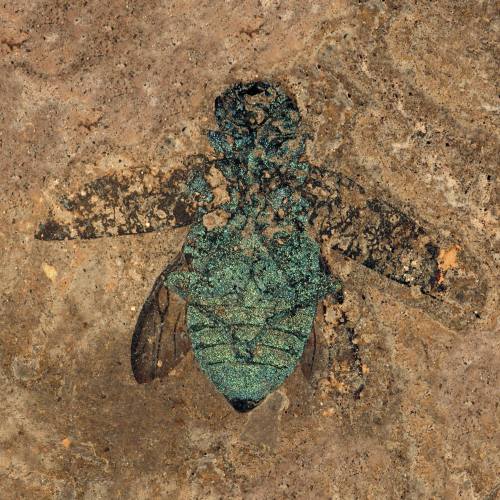Iridescence, 47 million years old.Some sites preserve fossils so well that very fine details remain,
Iridescence, 47 million years old.Some sites preserve fossils so well that very fine details remain, usually thanks to the very fine grain of the preserving sediment that is able to replace very small details of the original creature. One of these is the Messel pit in Germany (see http://on.fb.me/1VRgpkr for a detailed post), and some of the most extraordinary specimens found here include these shiny beetles with their real life colours. They are the purest real colours of extinct organisms that we have to date.Iridescence in the chitinous shell of insects is due to the fine structure of the shell rather than pigmentation. The light interacting with nano scale features close to visible wavelengths in scale diffracts and splits into its constituent colours in much the same way as in opals. When the grain of the preserving sediment is fine enough to replace these structures, the colours remain, virtually unchanged by the aeons that have elapsed since these jewel beetles lived.LozImage credit: Torsten Wappler, Hessisches Landesmuseum Darmstadthttp://bit.ly/1SiLk8h -- source link
#fossil#geology#iridescent#messel pit#germany#beetle#chiton#diffraction#light#color#jewel#science

